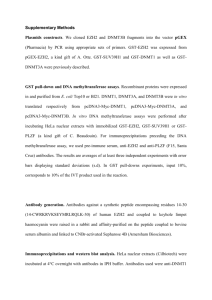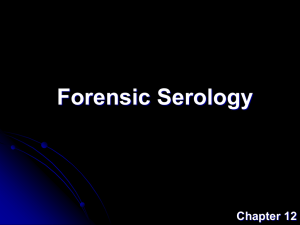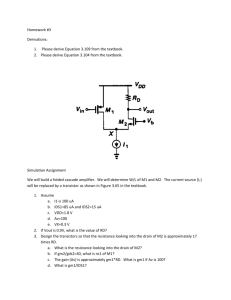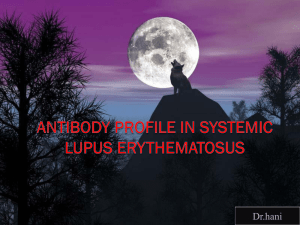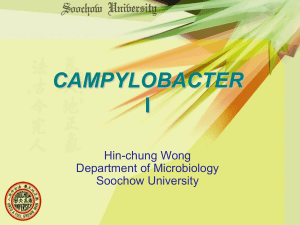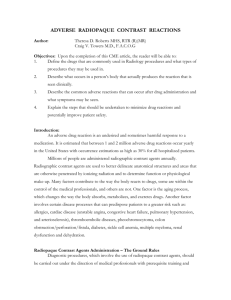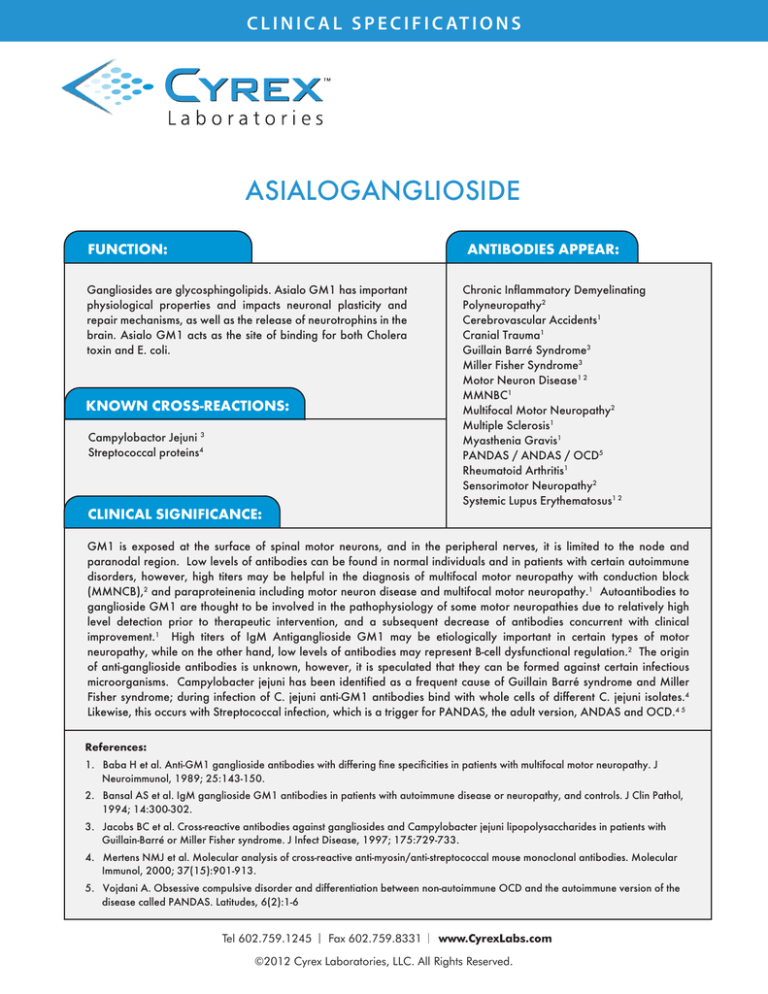
C L I N I C A L S P E C I F I C AT I O N S
ASIALOGANGLIOSIDE
FUNCTION:
ANTIBODIES APPEAR:
Gangliosides are glycosphingolipids. Asialo GM1 has important
physiological properties and impacts neuronal plasticity and
repair mechanisms, as well as the release of neurotrophins in the
brain. Asialo GM1 acts as the site of binding for both Cholera
toxin and E. coli.
KNOWN CROSS-REACTIONS:
Campylobactor Jejuni 3
Streptococcal proteins4
CLINICAL SIGNIFICANCE:
Chronic Inflammatory Demyelinating
Polyneuropathy2
Cerebrovascular Accidents1
Cranial Trauma1
Guillain Barré Syndrome3
Miller Fisher Syndrome3
Motor Neuron Disease1 2
MMNBC1
Multifocal Motor Neuropathy2
Multiple Sclerosis1
Myasthenia Gravis1
PANDAS / ANDAS / OCD5
Rheumatoid Arthritis1
Sensorimotor Neuropathy2
Systemic Lupus Erythematosus1 2
GM1 is exposed at the surface of spinal motor neurons, and in the peripheral nerves, it is limited to the node and
paranodal region. Low levels of antibodies can be found in normal individuals and in patients with certain autoimmune
disorders, however, high titers may be helpful in the diagnosis of multifocal motor neuropathy with conduction block
(MMNCB),2 and paraproteinenia including motor neuron disease and multifocal motor neuropathy.1 Autoantibodies to
ganglioside GM1 are thought to be involved in the pathophysiology of some motor neuropathies due to relatively high
level detection prior to therapeutic intervention, and a subsequent decrease of antibodies concurrent with clinical
improvement.1 High titers of IgM Antiganglioside GM1 may be etiologically important in certain types of motor
neuropathy, while on the other hand, low levels of antibodies may represent B-cell dysfunctional regulation.2 The origin
of anti-ganglioside antibodies is unknown, however, it is speculated that they can be formed against certain infectious
microorganisms. Campylobacter jejuni has been identified as a frequent cause of Guillain Barré syndrome and Miller
Fisher syndrome; during infection of C. jejuni anti-GM1 antibodies bind with whole cells of different C. jejuni isolates.4
Likewise, this occurs with Streptococcal infection, which is a trigger for PANDAS, the adult version, ANDAS and OCD.4 5
References:
1. Baba H et al. Anti-GM1 ganglioside antibodies with differing fine specificities in patients with multifocal motor neuropathy. J
Neuroimmunol, 1989; 25:143-150.
2. Bansal AS et al. IgM ganglioside GM1 antibodies in patients with autoimmune disease or neuropathy, and controls. J Clin Pathol,
1994; 14:300-302.
3. Jacobs BC et al. Cross-reactive antibodies against gangliosides and Campylobacter jejuni lipopolysaccharides in patients with
Guillain-Barré or Miller Fisher syndrome. J Infect Disease, 1997; 175:729-733.
4. Mertens NMJ et al. Molecular analysis of cross-reactive anti-myosin/anti-streptococcal mouse monoclonal antibodies. Molecular
Immunol, 2000; 37(15):901-913.
5. Vojdani A. Obsessive compulsive disorder and differentiation between non-autoimmune OCD and the autoimmune version of the
disease called PANDAS. Latitudes, 6(2):1-6
Tel 602.759.1245
Fax 602.759.8331
www.CyrexLabs.com
©2012 Cyrex Laboratories, LLC. All Rights Reserved.







